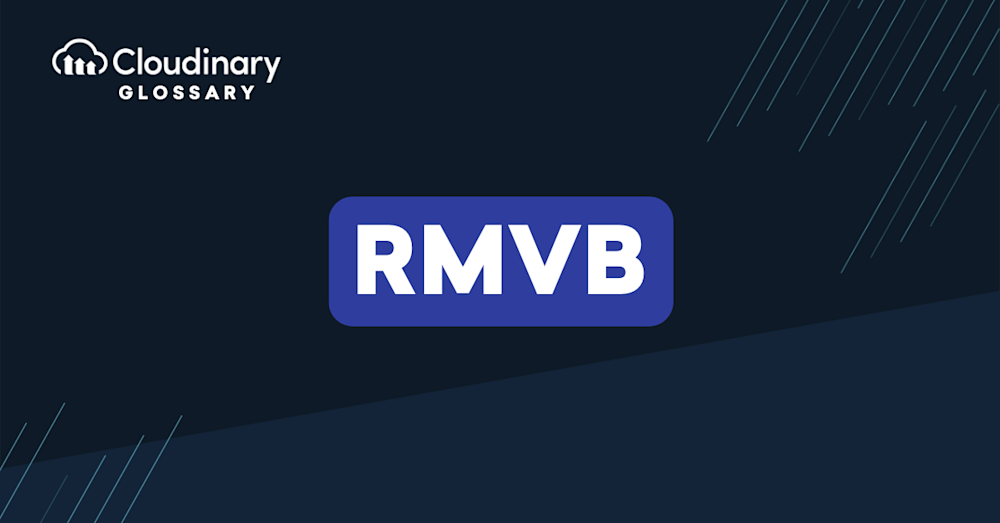What Is an RMVB File?
RMVB is a video file format developed by RealNetworks, explicitly designed for streaming and playing media content. Unlike traditional file formats with a constant bitrate, RMVB utilizes variable bitrate encoding, which means the video’s bitrate can fluctuate depending on the complexity of the content. This adaptability allows for efficient compression and smaller file sizes without compromising video quality.
This optimization for compression without compromising on quality too much has propelled RMVB files to be favored for various multimedia applications. However, it’s worth noting that while RMVB files offer considerable advantages, they are not as widely supported on standard media players or devices as more prevalent formats like MP4 or AVI. Users often need specialized software to play or convert RMVB files into more broadly compatible formats.
Advantages of RMVB Files
Let’s explore some of the benefits that make RMVB a compelling choice for certain use cases:
- Efficient Bandwidth Usage: Thanks to variable bitrate encoding, RMVB files dynamically adjust the amount of data used according to the complexity of the video scene. This approach allows for optimal bandwidth use, which is particularly advantageous in environments with limited bandwidth resources.
- High-Quality at Lower File Sizes: RMVB files maintain higher quality video at smaller file sizes than many other prevalent formats using constant bitrate. This characteristic makes them favorable for distributing high-quality video content in situations where storage space or data capacity is considered.
- Ideal for Streaming: RMVB files can offer better streaming experiences under fluctuating network conditions due to their variable bitrate, which can adapt to changes in network bandwidth availability.
Disadvantages of RMVB Files
While RMVB files boast several advantages, especially in terms of their efficient use of bandwidth to maintain video quality, there are a few limitations that developers and technical professionals should consider. Navigating these drawbacks will help ensure you’re making informed decisions about when and how to use RMVB files in your projects:
- Limited Compatibility – Unlike more universal formats like MP4 or AVI, RMVB files aren’t as widely supported across mainstream media players or devices. You may often need to convert them to ensure they’re accessible to a broader audience or find specialized software to play them.
- Challenges in Editing – Video editing software frequently lacks direct support for RMVB files. This limitation can add an extra step in your workflow, as you might need to convert RMVB files into a different format before you can edit them, potentially impacting efficiency.
- Potential for Quality Loss – Although RMVB’s variable bitrate effectively manages file sizes without greatly sacrificing video quality, the re-encoding process (such as when converting to another format) can sometimes result in quality degradation, especially if not managed carefully.
Understanding these considerations helps strike the right balance between leveraging RMVB’s efficient data management and ensuring that your video content is widely usable, without unnecessary hurdles in editing or playback.
How Can You Open an RMVB File?
To open and play an RMVB file, you have several options:
- Dedicated Media Players: Numerous media players, such as VLC Media Player, KMPlayer, and PotPlayer, support the RMVB format and can open these files seamlessly.
- Video Conversion Tools: If you encounter compatibility issues with traditional media players, you can convert the RMVB file into a different format using video conversion tools like Cloudinary’s Media Optimizer. This allows you to transcode the file into a more widely supported format without any loss in quality.
Should You Use RMVB Files Or Convert Them?
The decision of whether to use RMVB files in their original form or convert them to another format hinges upon a few key factors. On one hand, RMVB’s variable bitrate encoding offers substantial advantages when it comes to delivering high-quality video at smaller file sizes. If you are catering to a network or platform that supports RMVB and has available software for playback, using RMVB files as they are would be a valid option.
On the other hand, if broader compatibility and easier playback on a broader array of devices or systems are your priorities, converting RMVB files into more universally recognized formats like MP4 or AVI might be a more viable route. The versatility these formats offer significantly outweighs the marginally larger file sizes you might experience after conversion. Additionally, popular software, tools, and media players inherently support them, freeing you from the need of having specialized software for playback.
In this scenario, the minute loss in video quality due to conversion is often outweighed by the gain in usability and compatibility. Just remember, the decision should align with the needs of your project and the infrastructure within which your media will be used. Balancing quality, size, and accessibility is the essence of expertise in handling video formats.
Closing Out
RMVB files offer significant advantages in terms of compression efficiency, playback quality, and broad compatibility. However, managing and delivering RMVB files effectively can be a challenge. Whether you choose to use RMVB files in their original form or convert them into another format, it’s essential to approach your workflow with an informed perspective on these formats’ strengths and limitations.





